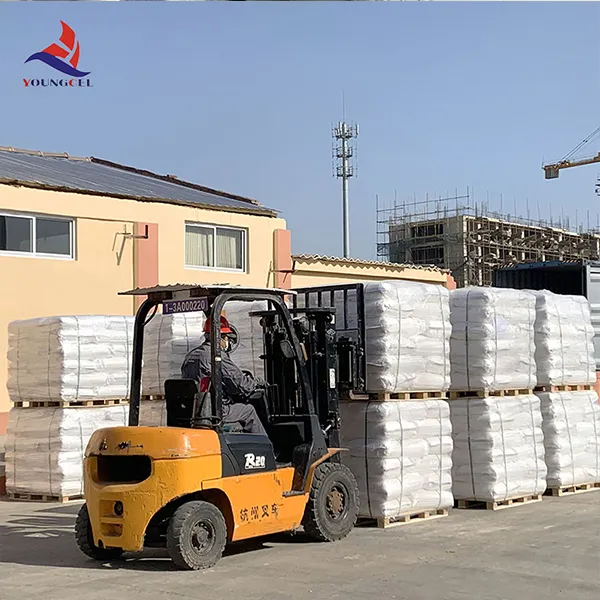Exploring Ether Cellulose Structure, Properties, and Applications
Ether cellulose is a fascinating compound that has gained significant attention in various fields due to its unique properties and versatility. As a modified cellulose, ether cellulose is derived from the natural polymer cellulose, which is abundantly found in the cell walls of plants. The modification process involves the substitution of hydroxyl groups in cellulose with ether groups, leading to a substance that possesses distinct characteristics suitable for numerous applications.
Structure of Ether Cellulose
The structural alteration that occurs during the etherification of cellulose results in the formation of ether cellulose chains that retain the fundamental backbone of glucose units linked by β(1→4) glycosidic bonds. The introduction of ether groups increases the solubility of cellulose in organic solvents and enhances its ability to be used in various formulations. The type of etherification agent and the extent of substitution can significantly influence the properties of the resulting ether cellulose, including its solubility, viscosity, and thermal stability.
Different grades of ether cellulose can be produced based on the degree of substitution (DS). This process not only optimizes the physicochemical properties but also tailors the cellulose for specialized applications, whether in pharmaceuticals, food, or industrial materials. Common types of ether cellulose include methyl cellulose (MC), hydroxypropyl methyl cellulose (HPMC), and ethyl cellulose (EC). Each of these derivatives exhibits unique behaviors based on their chemical modifications.
Properties of Ether Cellulose
One of the most notable properties of ether cellulose is its ability to form gels and films, making it a popular choice in coatings, adhesives, and food emulsions. The hydrophilic nature of ether cellulose allows it to absorb water, leading to swelling and forming stable gels, which can be particularly useful in food processing and pharmaceuticals as a thickening agent or stabilizer.
In addition to its thickening properties, ether cellulose possesses excellent film-forming capabilities, which are crucial in applications such as drug delivery systems
. Its biocompatibility and ability to control drug release rates make it an attractive option for encapsulating various therapeutic agents.ether cellulos

Furthermore, ether cellulose exhibits good mechanical strength and flexibility, which is beneficial for creating structural films and coatings that require durability. The thermal stability of ether cellulose is another advantage, allowing it to withstand processing temperatures that might otherwise degrade other cellulose derivatives.
Applications of Ether Cellulose
The diverse properties of ether cellulose lend themselves to a wide range of applications across different industries. In the food industry, it is widely used as a thickening agent, emulsifier, and stabilizer in products such as sauces, dressings, and ice creams. Its ability to improve texture and mouthfeel has made it a favorite among food scientists.
In the pharmaceutical sector, ether cellulose serves as an essential component in the formulation of controlled-release medications and coatings for tablets. Its biocompatibility ensures that it does not adversely affect the body, making it a reliable option for medical applications.
The cosmetic and personal care industry also benefits from ether cellulose. Its film-forming ability and emollient characteristics make it an integral ingredient in various products, including lotions, creams, and hair care items, providing improved aesthetic and functional qualities.
Moreover, ether cellulose is employed in industrial applications such as paints, coatings, and adhesives due to its rheological properties and effectiveness in enhancing the consistency and stability of formulations.
Conclusion
Ether cellulose stands out as a highly versatile compound derived from natural cellulose. With its unique structural properties and an extensive range of applications, it plays a crucial role in enhancing the functionality of products across multiple industries. As research continues to unveil new methods of modifying and utilizing ether cellulose, its significance in both industrial and pharmaceutical applications is poised to grow, reaffirming its status as an indispensable derivative of cellulose.
-
The Application and Significance of Construction RdpNewsMay.19,2025
-
Industrial Grade HpmcNewsMay.19,2025
-
Building Coating Adhesive Building Coating Adhesive HpmcNewsMay.19,2025
-
Application Of Hpmc For Detergent For Detergent In DetergentsNewsMay.19,2025
-
Application Of Hpmc Cellulose In Cement-Based MaterialsNewsMay.19,2025
-
Application Of High Quality Hpmc For Construction In The Field Of ConstructionNewsMay.19,2025




